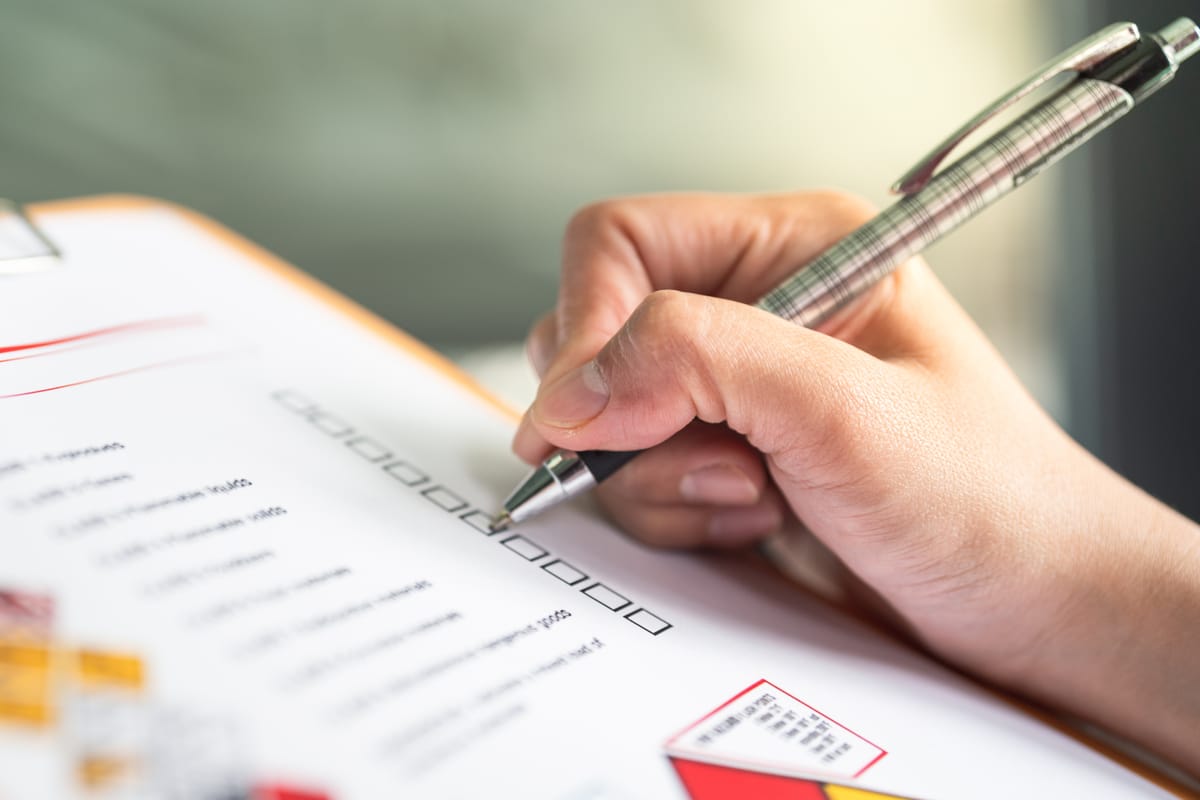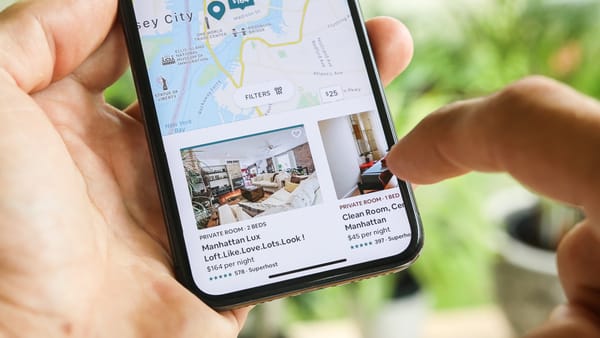Airbnb Inspection Checklist for Hosts and Property Managers

Positive reviews are the lifeblood of your Airbnb business. High reviews drive bookings, higher rates, and repeat guests. But great reviews don’t happen by chance. They’re the result of a well-maintained property where every detail, from the entryway lighting to the kitchen appliances, works exactly as guests expect.
An Airbnb inspection checklist gives you the system. Instead of relying on memory or rushing through preparations, you have a clear, repeatable process that ensures nothing gets missed.
Here, we prepared a detailed inspection checklist you can use regularly.
Does Airbnb Require Inspections?
Airbnb’s policies require that your listing meet their quality standards and comply with all local laws. Local laws and regulations in some cities, states, and countries may require a safety inspection or permit before you can operate a short-term rental (for example, fire safety checks, building compliance inspections, and guest safety measures).
As Airbnb hosts deal with frequent guest turnover, a vacation rental property needs to be in pristine condition to ensure guest satisfaction. Effective property management includes regular inspections, which highlight the importance of proactively identifying issues like cleaning inefficiencies, maintenance problems, or signs of wear and tear.
Consistently performing these checks can make all the difference in maintaining a high ranking on the Airbnb platform, as guests rely on accurate photos, descriptions, and a flawless guest experience.
When to Do an Airbnb Inspection
The property manager should inspect your Airbnb property regularly. More precisely, there are a few ways you could arrange this inspection process.
Before a new guest check-in
It’s always a good idea to inspect your property before every new guest arrives or after the last guest checks out, and cleaning is done. This doesn’t have to be a full-scale deep inspection, but a thorough walk-through ensures everything is clean, functional, and ready.
Check that appliances work, lights are functioning, everything is clean, and essentials like linens and toiletries are stocked.
Periodic deep inspections
Schedule deep inspections every few weeks or months to ensure things are running smoothly. This is when you take a closer look at areas such as under furniture, behind appliances, plumbing, electrical outlets, and safety equipment like smoke detectors.
Deep inspections allow you to spot and fix hidden issues, and also give you the opportunity to refresh décor, replace worn-out items, and keep the property feeling like new.
Seasonal upkeep
A seasonal inspection, done at the start of summer, winter, or any major weather shift, helps you prepare the property accordingly, maintain quality, and organize maintenance tasks.
For example, you might check insulation, heating, or cooling systems, clean gutters, or service outdoor areas. Sometimes this requires scheduling maintenance, like servicing the air conditioning.
Outdoor Spaces and Entryway Checklist
- Inspect the roof for signs of damage.
- Check gutters and downspouts for blockages or leaks.
- Look for signs of pest activity.
- Inspect outdoor lighting fixtures and replace burnt-out bulbs.
- Verify security cameras and motion lights are working.
- Remove any debris, overgrown plants, or fallen branches.
- Inspect BBQ grills or fire pits.
- Clean and maintain any outdoor decorative elements.
- Test door locks, deadbolts, and keyless entry systems.
Interior General Areas Checklist
- Walk through each room and vacuum carpets, mop hard floors, and check for any stains, scratches.
- Look over the walls and ceilings for scuffs, cracks, water stains, or peeling paint.
- Make sure all windows are clean inside, and blinds or shades are dusted.
- Turn on all lights to confirm bulbs are working, and check that electrical outlets, electrical systems.
- Test the thermostat, vents, and heating or cooling systems, and replace air filters if needed.
- Dust décor items, mirrors, and picture frames.
- Vacuum or shake out rugs and mats.
- Open closets and storage areas to ensure they are organized, stocked with hangers.
- Open the windows to let in fresh air.
- Do an odor check in every room and address any unpleasant smells.
Kitchen Inspection Checklist
- Check if all countertops, cabinets, and shelves are clean, free from crumbs, grease, or sticky residue.
- Open each cabinet and drawer to make sure they are organized, stocked with necessary cookware, utensils, and dinnerware.
- Inspect all appliances: the stove, oven, refrigerator, microwave, dishwasher, toaster, and coffee maker.
- Run the sink to check water pressure, and look underneath for any leaks or water damage.
- Check that dish soap, sponges, paper towels, and trash bags are available for guests.
- Inspect the refrigerator and freezer and remove any expired or leftover food from previous guests.
- Open the dishwasher to ensure the interior is spotless, the filter is clean, and no odors are present.
- Make sure the kitchen is stocked with basic essentials like salt, pepper, and cooking oil.
Bathroom Inspection Checklist
- Begin by checking that all surfaces: sinks, countertops, mirrors, and tiles are spotless and free from water spots, soap scum, or grime.
- Run the faucets to confirm strong water pressure and proper drainage.
- Inspect under the sink for any leaks, moisture, or signs of mold.
- Make sure the toilet flushes properly.
- Check the shower or bathtub for cleanliness, ensuring no mildew is present.
- Make sure fresh towels, hand towels, and washcloths are clean, neatly folded, and stocked in the designated area.
- Refill toiletries such as soap, shampoo, conditioner, and toilet paper.
- Empty and clean the trash bin, and check that the bathroom has a fresh scent with no lingering odors.
Bedroom Inspection Checklist
- Start by checking that all bedding: sheets, pillowcases, blankets, and comforters are freshly laundered and free from stains.
- Ensure pillows are in good condition without odors.
- Inspect the mattress for cleanliness and comfort, making sure there are no visible stains, sagging areas, or pests.
- Look over all furniture, including nightstands, dressers, and chairs, to ensure they are clean.
- Check that curtains or blinds are working properly.
Living Room and Common Areas
- Check that all furniture: sofas, chairs, coffee tables, and side tables are clean, sturdy, and free from stains or damage.
- Vacuum or mop the floors, paying special attention to corners and under furniture.
- If there are area rugs, make sure they are clean, free from odors, and positioned securely to prevent slipping.
- Dust all surfaces, including shelves, mantels, décor, and electronics.
- Check that all lighting fixtures and lamps have working bulbs.
- Check if the windows are clean.
Safety and Compliance Checks
- Test all smoke detectors and carbon monoxide detectors.
- Check for any safety hazards.
- Check that fire extinguishers are present as emergency preparedness, fully charged, and easily accessible.
- Check if the first aid kit is available.
- Post any legally required notices, safety instructions, or emergency contact information in visible locations.
Technology
Wi-fi and TV
- Test the Wi-Fi connection to ensure it is strong and stable throughout the property.
- Verify that the network name and password are correct and printed.
- Test all TVs, streaming devices, and remote controls to make sure they work properly, and replace or recharge batteries as needed.
Smart Home Devices
- Check smart home devices, such as thermostats, smart locks, video doorbells, or voice assistants.
Desk spaces
- Make sure chargers or charging stations for phones, tablets, or laptops are available and working.
- If you provide a workstation or desk area, confirm that outlets, surge protectors, or USB ports are in good condition.
Security Cameras
Inspect security cameras, make sure that they are disclosed to guests, and ensure they are positioned only in allowed areas to ensure compliance.
Takeaway
A successful short-term rental comes down to delivering a consistently excellent experience for every guest. Short-term rental inspections are much easier when you have a detailed inspection checklist to follow.
It takes the guesswork out and ensures nothing gets overlooked between guest stays. Make inspections part of your hosting routine to protect your property and earn stellar reviews.
For a seamless hosting experience, consider automation tools like iGMS. iGMS is a property management tool for Airbnb hosts that allows you to organize maintenance tasks, such as assigning cleaners with ease, and ensures your listing calendar is always up to date.
About the Author
Zorica Milinkovic is a B2B SaaS writer who is passionate about psychology, marketing, and, when inspiration strikes, cooking. You can find her on LinkedIn.







